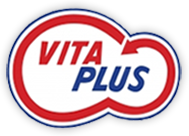
The fungus among us: The buzz behind the fuzz – Dr. Michelle Windle, Vita Plus
 k into a bar. The bartender yells, “I don’t want any trouble here!” They responded “Calm down, friend… we’re just fun-guys!”
k into a bar. The bartender yells, “I don’t want any trouble here!” They responded “Calm down, friend… we’re just fun-guys!”A “good” joke, but it’s not funny when those molds appear in your feed and start causing trouble. Molds enter the silo on plants from the field and, while some molds grow better in the field (i.e. Fusarium), others grow better in storage (i.e. Penicillium). Use of a buchneri-based silage inoculant, such as Crop-N-Rich Stage 2, will help deter the growth of storage molds, but it can’t undo mold growth or mycotoxin production that was already done in the field.
Moldy feed is problematic because it can decrease intake, production, reproduction, and pose as a threat to human and animal health. Two of the main ways mold can negatively affect performance are by reducing palatability and producing mycotoxins. The visual appearance of mold and the presence of mycotoxins in feed are not correlated. Visibly clean feeds are not always devoid of mycotoxins, and vice versa.
The variety and cost of mycotoxin tests can be overwhelming, and it’s tempting to try to save money by ordering a single mycotoxin test. I frown on this decision. Usually, those tests come back positive, especially if DON is chosen (most corn has about 1 to 1.5 ppm of DON). Costly binders are usually added to the ration, although they typically won’t solve the problem. Producers will finally run a mycotoxin panel to determine the real problem and take a more targeted approach, which they should have done in the first place.
Rock River Laboratory offers an accurate, comprehensive mycotoxin panel for $300 that measures 19 toxins, including Aflatoxin (a potent mycotoxin with strict FDA regulation in feed). I use this panel whenever I encounter mycotoxins. It is crucial to take a representative sample to test for molds and mycotoxins. The sample should then be sent to the laboratory in a refrigerated, but not frozen, package.
A lot can be learned from the color and type of mold. Ask your Vita Plus consultants for a chart to help identify molds based on visual appearance, or reference this technical bulletin to learn more about common molds that can produce mycotoxins. Note, the most common molds in Wisconsin are Fusarium, Penicillium and Aspergillus.
Typically, molds are reflective of bigger problems: spoilage at best and mycotoxins at worst. Proper management will minimize production of molds and mycotoxins. Contact your Vita Plus consultant if you suspect a mold problem with your feed.
| Category: |
Animal health Forage Foundations Mycotoxins |

